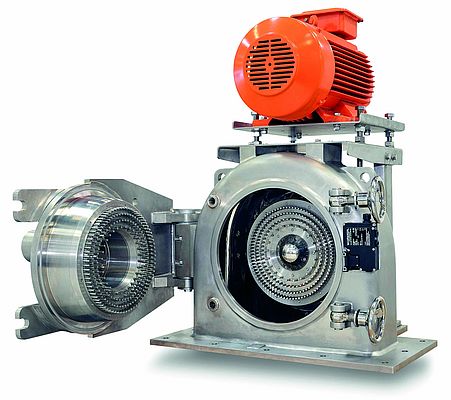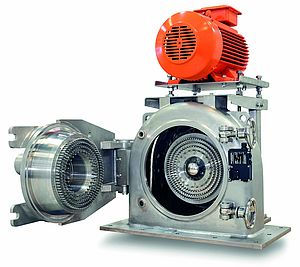The Swiss company Anutec developed a process for complete separation of wheat kernels into constituents during milling. Using this process, the bran essentially does not need to be milled together with the rest of the grain, but can be separated directly by means of screening.
With this new milling technology comprising pin Mill and screen, which has actually been known for a long time, many conventional processing steps become unnecessary when producing flour. This is because a single milling and screening pass is used instead of numerous passes. For the screening technology employed, Anutec relies on the Sonoscreen plus ultrasonic technology from Telsonic AG. Proper selection of the screen alone makes it possible to classify the type of flour. This extremely practical process, which offers energy and ecology benefits and works on both a small and large scale, could revolutionise production of flour.
“There will be a revolution”, states Arthur Nussbaumer with assurance. “Not because of increasing bread prices this time, but because of our new milling process for wheat. The reason: this process makes it possible to actually save 90% of the energy and time required”, continues the Director of Anutec in Düdingen. What sounds so unbelievable has already been realised and brought to the market by the Swiss development engineers. And what is even more remarkable: A universal pin mill for milling grain that the engineer has designed and is marketing through his own company. It includes an ultrasonic screen from Telsonic with screens that have different mesh sizes, allowing the user to classify flour into the desired type with a single pass. The energy required is about only ten percent of that needed to produce flour conventionally. And the yield of the specific type of flour is even considerably higher. Users report productivity gains of up to 40 percent.
What is revolutionary about the process is the combination of a moistening process with a milling process in a pin mill with a screening step that yields clean fl our reliably and quickly. The cleaned grain is first moistened in a moistening screw by introducing a precisely controlled amount of steam. “During the harvest, everyone attaches great importance to a moisture content of between 13 and 14 percent in the kernel. We add moisture to the kernel”, explains Ernest Badertscher. The former Nestlé has conducted research on food production for over 30 years and is now focusing on simple, energy- efficient processes for food production. Fast and carefully controlled moistening makes the bran soft, yet pliable and tough at the same time.



















